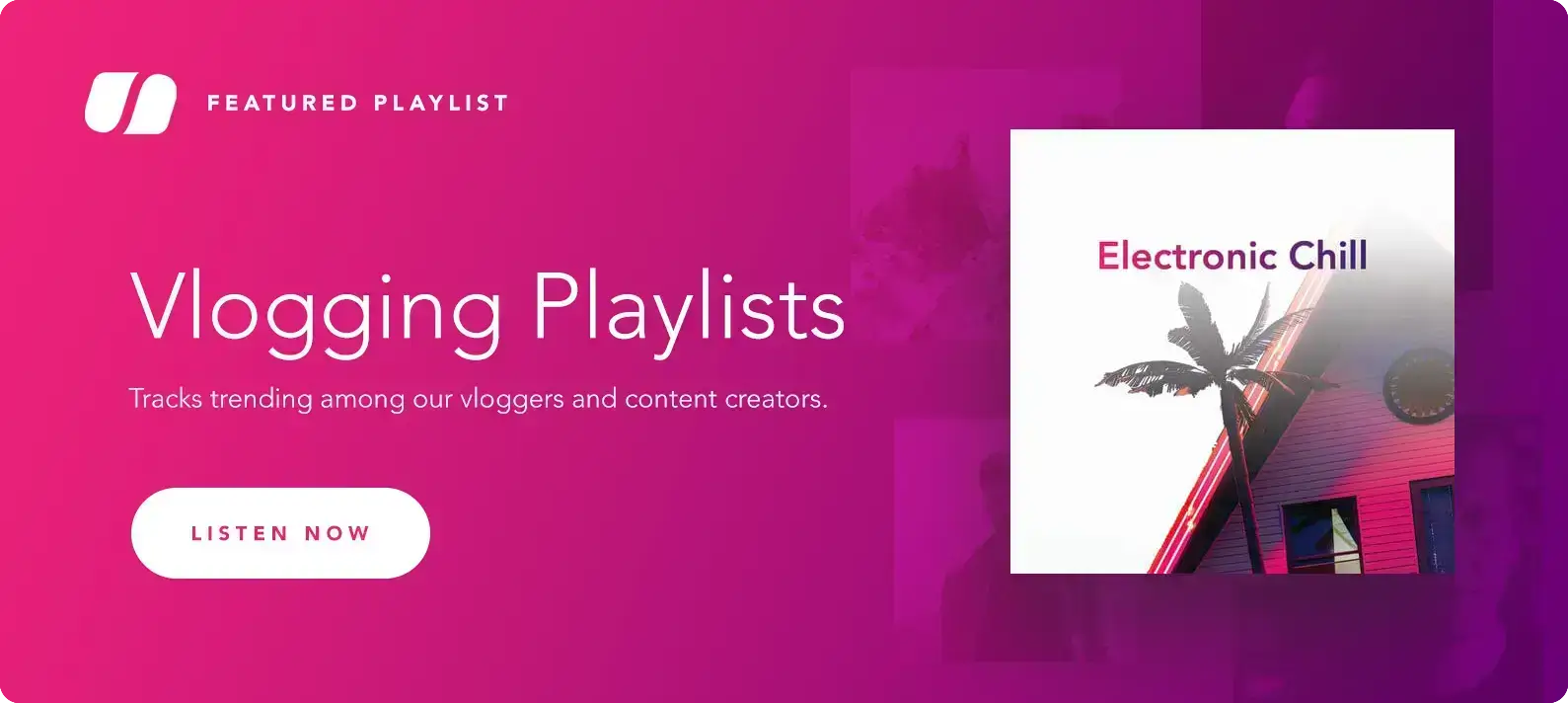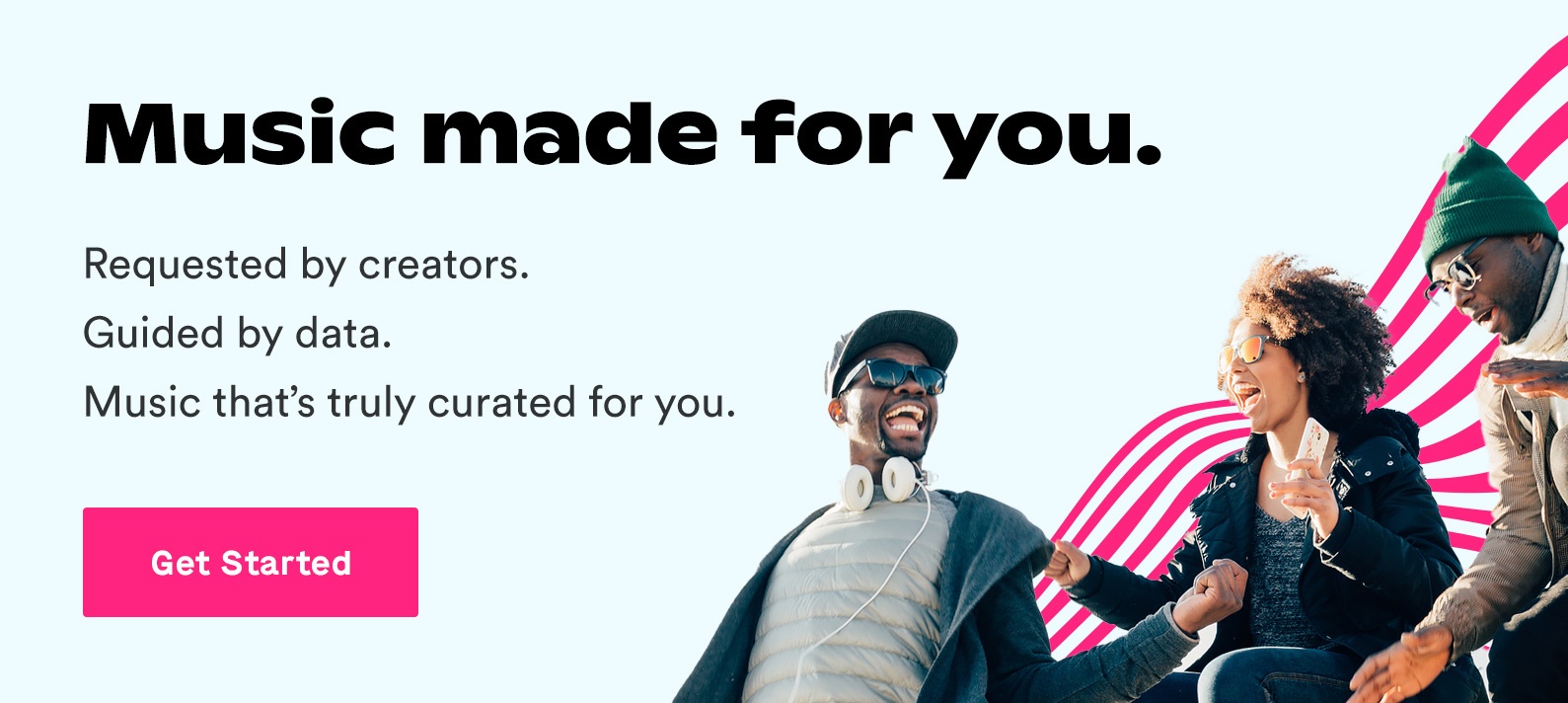It’s no exaggeration to say that YouTube is kind of a big deal. In a single month, YouTube pulls in over 2 billion users, including 94% of the American population.
In other words, about one-third of the world’s population comes to YouTube to watch music videos, start DIY projects, and laugh (or cry) at cat videos.
And all of that activity has attracted millions of content creators to YouTube. So if you want to get rich from making and monetizing videos — or at least earn a nice little income on the side — then you need to understand how the YouTube music policy works.
Copyright infringement is something YouTube takes very seriously, and the platform has invested over a hundred million dollars into its sophisticated Content ID system to keep us all honest. So it's expected that anyone who wants to grow their YouTube channel will understand and follow the copyright rules.
In addition to breaking down the YouTube music policy, we’ll also show you where you can find royalty free music for YouTube that won’t result in them banning your video or handing your hard-earned ad revenue to someone else.
What is music copyright and why does it matter?
Wouldn’t it be wonderful if you could use any music you wanted in your video?
Not really.
Despite what you might think, copyright law protects all creatives, including you. Without copyrights, anyone could download and reuse your videos however they wanted. And they would do it without giving you credit, requesting permission, or paying royalties.
Copyright law is a sword that cuts both ways. On one hand, it protects artists so they retain ownership and control over their work. But it also means you can’t drop Taylor Swift’s latest hit into your timeline, no matter how perfect it fits your vision for the video.
With so many content creators, YouTube has struggled to keep up with copyright infringement. Many users have accidentally posted videos with copyrighted material. In fact, the problem was so serious that Viacom sued YouTube for $1 billion in 2007, claiming that YouTube hosted over 160,000 unauthorized clips from Viacom properties like MTV and Nickelodeon.
That case pushed YouTube to invest in Content ID and copyright infringement notices. And as a content creator who uses other artists’ work (in the form of music for video), you need to understand how these copyright policies work and what you can do to protect yourself and your content.
If you don't have time to read this whole article, this FAQ video from YouTube does a good job of explaining the basics of copyright and what you should look out for when incorporating music into your videos.
How YouTube’s Content ID system works
In a nutshell, Content ID is a massive database of over 75 million reference files. YouTube uses this information to track and identify copyrighted materials. And once Content ID finds a copyright infringement, it alerts the content owners so they can take action.
But Content ID isn’t omniscient. There’s no magical internet power that sniffs out videos that break copyright. The system depends on content creators like you to grow its database, respond to Content ID notifications, and attribute anyone else’s work that you include in your videos.
Let’s say that your cousin Jimmy is an amazing ukulele player. He’s recorded several songs, and you used one of them in your documentary about your personal struggle to make the perfect yogurt parfait.
Now, Jimmy doesn’t want anyone to use his songs without his permission, so he uploads all of his music files to YouTube’s Content ID and proves that he is the content creator and owner.
When Jimmy uploads the files, YouTube turns them into special audio fingerprints in its database. YouTube will then scan this fingerprint against all of its current videos and any future uploads, searching for matches of people using Jimmy’s song without his permission.
Once you upload your parfait documentary to YouTube — which includes one of Jimmy’s songs — YouTube’s Content ID system scans the video and finds a match. But instead of immediately taking down your video, the system sends Jimmy a notification. As the owner of the song, Jimmy has three ways he can respond:
- He can block your video so it can’t be viewed.
- He can monetize your video by running ads on it and receiving the ad revenue it generates.
- He can track your video and receive useful data like viewership numbers and where those viewers are located.
Unsurprisingly, most content owners choose to automatically monetize any video that uses their content. This has resulted in over $2 billion in payouts (from over 800 million video claims) from the Content ID system. And that number only covers the past five years.
In this way, the Content ID System offers a win-win scenario. It lets content owners receive revenue from their content, and it also allows other users’ videos to stay up. Jimmy can earn money from your documentary, and you get to broadcast your Oscar-quality documentary to the world.
Your next question is probably, “But what if Jimmy gave me permission to use his song?”
Content ID does allow content creators to dispute a copyright claim. If you dispute a claim, YouTube gives the content owner 30 days to respond. And all ad revenue generated during these 30 days is held by YouTube, so both you and Jimmy will be motivated to solve the issue.
And even if Jimmy has become corrupted by the money your video is generating and decides to deny your dispute, YouTube also allows you to appeal that decision.
Content ID might seem scary or like it’s out to get you, but YouTube has done a lot of work to empower its creators. It is as close to a win-win situation as the platform can offer, given the sheer volume of video uploads and the complexities of copyright law.
But if you follow these rules (or only license royalty free music for your videos), you’ll be protected from Content ID and any copyright claims that might be placed against your videos. If you’ve got a license to use a song, you will be 100% protected. That’s one less thing to worry about.
(Licensing songs from a wholly-owned library like Soundstripe is also a really good idea.)
Dealing with copyright infringement notices
While Content ID is YouTube’s automated system, copyright infringement notices are like the platform’s hands-on defense mechanism. These copyright infringement notices are a content owner’s main tool when it comes to enforcing YouTube music policy.
If an artist or filmmaker sees a video that uses their content without permission, they can submit a notice of copyright infringement to YouTube. In response, YouTube will take down the video and forward the notice on to the video’s uploader.
To continue our earlier example, let’s imagine that Content ID missed the song used in your parfait documentary. Instead, Jimmy watches the video, recognizes his song, and is scandalized that you would try to steal his work. He submits a claim against your video right away.
Unlike Content ID claims, copyright infringement notices come at a cost. Your video is immediately taken down, no questions asked. But more importantly, you’ll also have a “strike” against your channel.
These strikes disappear after 90 days if you go through YouTube’s copyright school. But if you receive three strikes within that 90-day period, YouTube reserves the right to terminate your account. You’ll lose all of your channels and videos, and YouTube will also block any accounts you try to open in the future.
If you’re trying to monetize your channel and turn it into a source of income, this type of hit could take away all your earnings and become a black mark on your reputation as a content creator.
But remember: You originally got Jimmy’s permission to use his latest ukulele hit. Just like with Content ID, you can dispute his claim against you. This would remove the strike on your account, get your video back up, and restore your reputation...but probably not your relationship with Jimmy.
The benefits of royalty free music for video
Now that you understand the ins and outs of YouTube copyright rules, it’s important to remember that these policies don’t replace traditional copyright law. A content owner could go outside of YouTube and send you a legal cease and desist notice for any videos that illegally use their content.
And if that wasn’t bad enough, these notices can lead to court hearings. In the worst case scenarios, copyright infringement could come with a $100,00 fine, jail time, or both.
So yeah. You don’t want to mess around with copyright material. At all. And with so much at stake, it’s a whole lot safer, cheaper, and easier to use royalty free music instead.
This is where a company like Soundstripe steps in. We understand that you’re a content creator. You’d rather work on videos, not spend months negotiating music licenses. And let’s not even talk about the price tags on some of the most popular songs out there.
Soundstripe is a royalty free music company. In other words, we have a team of music artists that write and produce songs exclusively for our library. And for a monthly or yearly subscription, you’ll get unlimited access to thousands of radio-quality music that you can use in any YouTube video you want, whether it’s a commercial project or a personal one.
Any song you license from us will be yours in perpetuity. (In other words, your license lasts forever, no matter how much money the video generates for you.) And that’s just the kind of thing that lets content creators like you sleep a whole lot easier at night.
Further reading
Interested in reading more top resources and getting our best filmmaking tips and tricks? Here are a couple of our most popular articles from across the Soundstripe blog:



